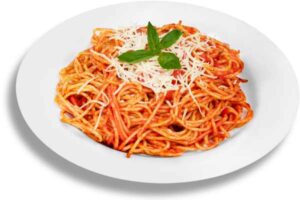Italian wines are celebrated around the world for their distinctive flavors, rich history, and exceptional quality. The process of making Italian wine is an art that combines tradition, craftsmanship, and a deep understanding of the land. In this article, we will explore the intricate steps involved in the production of Italian wines, from vineyard to bottle.
The Art of Italian Winemaking
A Rich Tradition
Italy’s winemaking tradition dates back thousands of years, with evidence of wine production from ancient Etruscan and Roman civilizations. Today, Italian winemakers blend historical techniques with modern innovations to produce some of the finest wines globally.
Regional Diversity
Italy’s diverse climate and soil types create a wide variety of wine styles and flavors. From the cool, mountainous regions of the north to the warm, sun-soaked areas of the south, each region has its own unique winemaking traditions and grape varieties.
The Winemaking Process
Vineyard Management
Site Selection and Soil
The foundation of great Italian wine begins in the vineyard. The selection of the vineyard site is crucial, as factors such as soil composition, climate, and altitude influence the quality of the grapes. Italian winemakers often choose vineyards with well-draining soils and optimal sunlight exposure to ensure healthy grape growth.
Grape Varieties
Italy is home to a rich array of grape varieties, both indigenous and international. Some of the most famous Italian grapes include Sangiovese, Nebbiolo, Barbera, and Pinot Grigio. Each variety contributes distinct characteristics to the wine, from flavor profiles to color and tannin structure.
Harvesting
Timing and Methods
The timing of the grape harvest is critical to achieving the desired flavor and sugar levels in the wine. In Italy, grapes are typically harvested by hand to ensure that only the best fruit is selected. The harvest season varies depending on the region and grape variety but usually occurs between late summer and early autumn.
Sorting and Crushing
Once harvested, the grapes are sorted to remove any damaged or underripe fruit. They are then crushed to release the juice, which will be fermented to produce wine. Modern winemaking facilities use gentle crushing techniques to minimize the extraction of undesirable tannins and phenolics.
Fermentation
Red Wine Fermentation
For red wines, fermentation occurs with the grape skins, which impart color and tannins to the wine. The crushed grapes are transferred to fermentation tanks, where yeast is added to convert the sugars into alcohol. The fermentation process typically lasts from several days to a few weeks, depending on the style of wine being produced.
White Wine Fermentation
White wines are made by fermenting grape juice without the skins. The juice is transferred to fermentation tanks, where yeast is added to start the fermentation process. White wine fermentation is usually conducted at cooler temperatures to preserve the delicate aromas and flavors.
Aging
Barrel Aging
After fermentation, many Italian wines undergo aging in barrels to develop complexity and character. The type of barrel used—such as French oak or American oak—can significantly influence the wine’s flavor profile. Aging in barrels allows the wine to integrate its flavors and acquire subtle notes of vanilla, spice, or toast.
Bottle Aging
Some wines are also aged in bottles before release. Bottle aging allows the wine to mature and evolve, enhancing its flavors and aromas. The length of bottle aging varies depending on the wine style and producer’s preferences.
Blending
Blending is an essential step in creating a balanced and harmonious wine. Winemakers may blend different grape varieties or wines from different vineyards to achieve the desired flavor profile and complexity. This process requires a deep understanding of each component’s characteristics and how they interact.
Bottling and Labeling
Bottling Process
Once the wine has reached the desired age and flavor profile, it is filtered and bottled. The bottling process must be conducted with precision to avoid contamination and preserve the wine’s quality. Bottles are sealed with corks or screw caps, depending on the wine and producer’s preference.
Labeling
Italian wine labels provide essential information about the wine, including its region of origin, grape variety, and producer. Labels often feature classifications such as DOC (Denomination of Controlled Origin) or DOCG (Denomination of Controlled and Guaranteed Origin), indicating the wine’s adherence to specific quality standards.
Regional Wine Styles
Tuscany
Tuscany is renowned for its red wines, particularly those made from the Sangiovese grape. The region is famous for its Chianti, Brunello di Montalcino, and Vino Nobile di Montepulciano. Tuscan wines are known for their vibrant acidity, rich fruit flavors, and elegant tannins.
Piedmont
Piedmont, located in northwestern Italy, is home to some of the country’s most prestigious red wines, including Barolo and Barbaresco. These wines are made from the Nebbiolo grape and are characterized by their complex aromas, robust tannins, and aging potential.
Veneto
The Veneto region is known for its diverse wine styles, including Prosecco, Valpolicella, and Amarone. Prosecco is a popular sparkling wine with fresh, fruity flavors, while Amarone is a rich, full-bodied red wine made from dried grapes.
Sicily
Sicily, the largest island in the Mediterranean, produces a range of wines from both indigenous and international grape varieties. The region is known for its robust reds made from Nero d’Avola and elegant whites from Grillo and Catarratto.
The Influence of Terroir
Soil and Climate
The concept of terroir, which encompasses the soil, climate, and other environmental factors affecting grape growing, plays a crucial role in Italian winemaking. The unique terroir of each vineyard imparts distinctive characteristics to the wine, contributing to the diversity and complexity of Italian wines.
Traditional vs. Modern Techniques
Italian winemakers balance traditional methods with modern techniques to produce high-quality wines. While many producers adhere to time-honored practices, others embrace technological advancements to enhance precision and control throughout the winemaking process.
Conclusion
The production of Italian wines is a captivating blend of tradition, craftsmanship, and regional diversity. From the careful management of vineyards to the meticulous fermentation and aging processes, every step in winemaking contributes to the unique character and quality of Italian wines. By understanding the intricacies of Italian winemaking, wine enthusiasts can better appreciate the rich heritage and exceptional flavors that define Italy’s remarkable wine industry.
Whether you are savoring a glass of Chianti in Tuscany or enjoying a refreshing Prosecco in Veneto, the artistry and passion behind Italian winemaking are evident in every sip. The next time you enjoy an Italian wine, remember the centuries-old traditions and expert craftsmanship that bring these extraordinary wines to life.



